AICHI PREFECTURE, JAPAN – 5 January 2022 –
As important depositories of art and history, places of worship around the world are among the most popular destinations for travel. Church or mosque, synagogue, temple, or shrine, often the architecture alone is striking to see. Japan’s Buddhist temples and Shinto shrines are not only open to the public and easily accessible any day of the week, they are typically engaged deeply with their community, offering a lively calendar of festival days and an abundance of local color. In busy urban centers these sanctuaries can be welcome oases of quiet, too. The prefecture of Aichi in central Japan is home to more temples (4,558) than any other in the country, and ranks fourth for its number of shrines (3,355).*
* Statistics published by the Agency for Cultural Affairs as of December 31, 2019
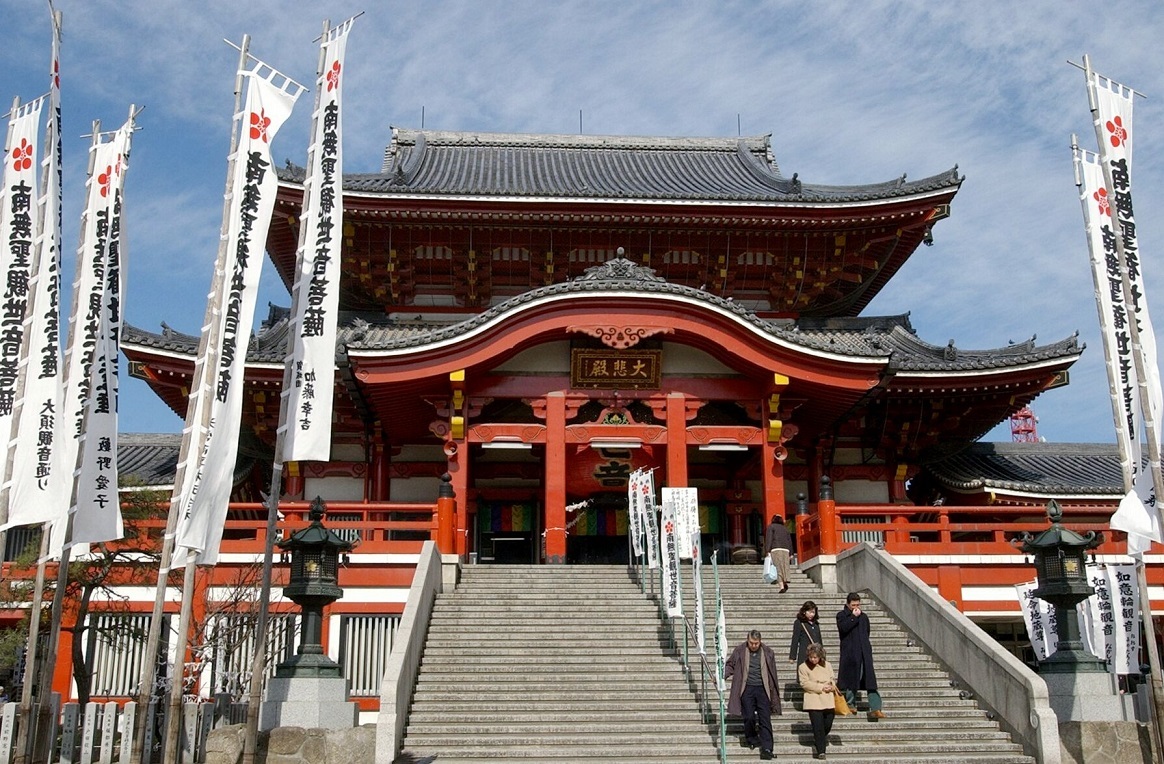
With more than two temples and one shrine per square mile, there are sites of interest in just about any neighborhood you may find yourself when visiting the prefecture.
Between the sixteenth and nineteenth centuries, the land now called Aichi was one of Japan’s most populated areas. Fertile plains here were ideal for growing rice, which under feudal rule became the base of the economy and a central form of currency. As a strategic center of wealth the land was also center-stage to a century-long period of samurai battles and the emergence of three figures—Oda Nobunaga, Toyotomi Hideyoshi, and Tokugawa Ieyasu—who are considered the nation’s unifiers. Their names come up repeatedly in the history of many sanctuaries around the prefecture.
Japan’s Buddhist and Shinto traditions draw from a complex intermingling of myth and ritual based in clan and kinship histories, the imperial court, state institutions, and community tradition. People in the country today continue to turn to both Buddhist and Shinto observances to enrich their day-to-day lives. The promenades leading to these sanctuaries are typically lined with shops and eateries that are rich in atmosphere, uniting the sacred and secular in seamless and sometimes surprising ways.
Osu Kannon Temple
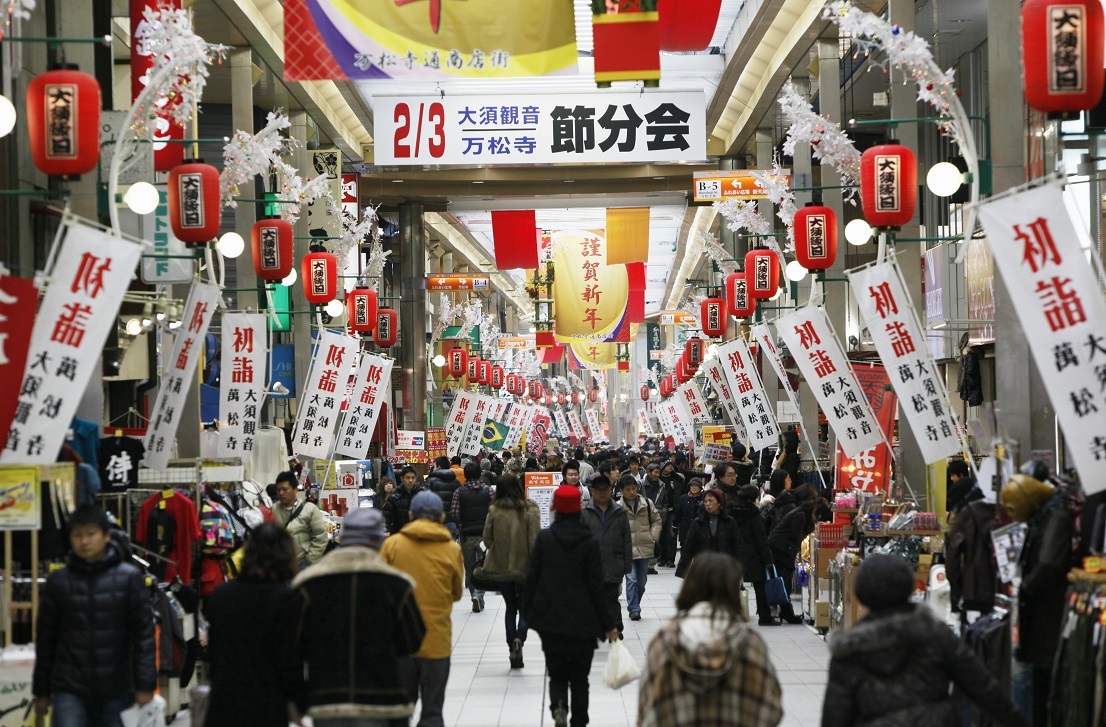
Osu Kannon Temple is deeply tied to the history of Nagoya, the prefectural capital. It stands in the heart of the city 1.8 miles (3 kilometers) due south of Nagoya Castle—a stroll of about 40 minutes if done direct, but there are so many attractions along the way that you may as well make a day of it. Just outside the temple is the lively Osu shopping arcade, boasting some 1,200 shops and restaurants.
Originated as a Shinto shrine in 1324 by Emperor Godaigo, the temple was moved to its present location in 1612 under the orders of Tokugawa Ieyasu, as Nagoya Castle was being built. The city literally grew up around the temple. The bustling arcade that stretches around it, while thoroughly modern with electrical appliances and anime goods, is a reminder that Nagoya began as a castle town. Today, a popular outdoor antiques market is typically held rain or shine on the temple precincts every 18th and 28th of the month. Vendors selling kimono, pottery, toys, and other vintage bric-a-brac set up their wares as early as 5 a.m., perfect if you’re jet-lagging. The grounds fill with stalls set against the bright red backdrop of the temple building. Inside, the principal object of worship is a wooden statue of the bodhisattva Kannon (Avalokiteshvara), the deity of compassion.

Bansho-ji Temple
Nearby is the family temple of the Oda clan. Established in 1540 and relocated here in 1610, Bansho-ji is popular among history buffs for its connections with the Oda and Tokugawa daimyo families, as well as the fact that it was the residence of the principal architect of Nagoya Castle. The grave of Oda Nobuhide, the father of daimyo Nobunaga, is here. Bansho-ji is also known for its mechanical karakuri dolls, designed in 1994 by the eighth-generation head of the Nagoya-based Shobei Tamaya family of artisans. These automatons recreate events in the life of Nobunaga five times daily, every two hours from 10 a.m. to 6 p.m.
Walking to Nagoya Castle from the Osu area will take you right through the bustling Sakae entertainment district and Shirakawa Park, the site of both the Nagoya City Art Museum and the Nagoya City Science Museum with its massive planetarium dome. The latter is fun for the whole family, with participatory exhibits to excite aspiring young scientists. The art museum houses a collection of 5,000 works not only by contemporary Japanese artists but also École de Paris stars like Marc Chagall, Marie Laurencin, and Amedeo Modigliani, as well as Mexican renaissance artists Frida Kahlo, David Alfaro Siqueiros, and Rufino Tamayo.
Wakamiya Hachiman Shrine
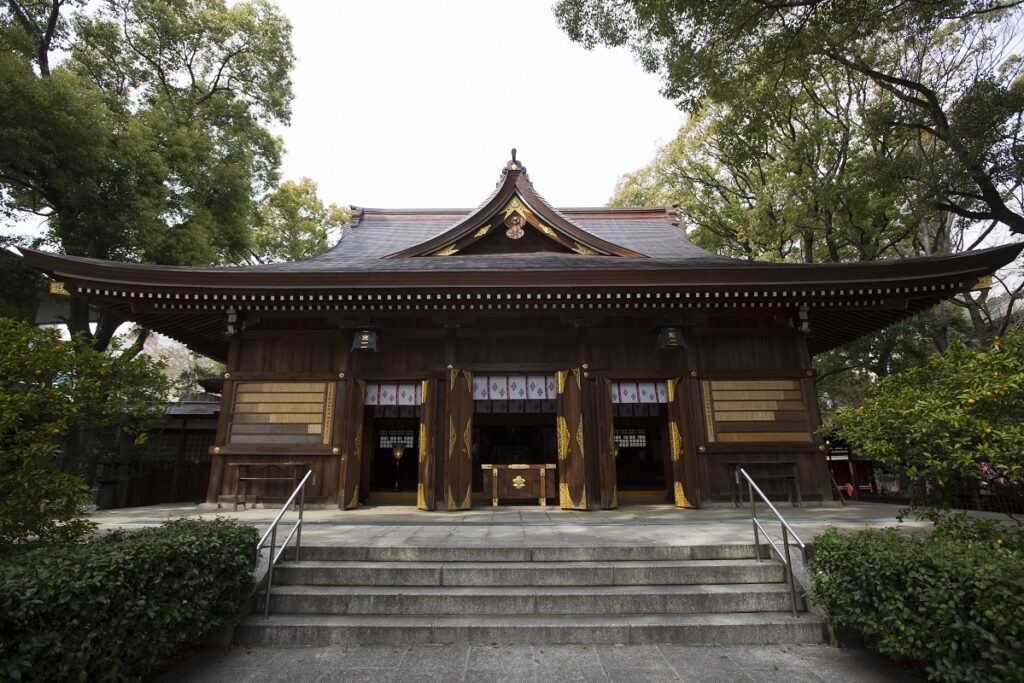
Two blocks east of the park is Wakamiya Hachiman, another sanctuary relocated to the neighborhood in the early 1600s as plans for the construction of Nagoya Castle got underway. Associated with the military arts, it was designated by Ieyasu as the guardian shrine of the city. Its annual festival, held in mid-May, is a lively affair that dates back to the late seventeenth century. A portable shrine and a float complete with performing karakuri dolls are paraded through the streets to Nagoya Shrine, just south of the castle.
Toyokawa Inari (Toyokawa Kaku Myogonji Temple)
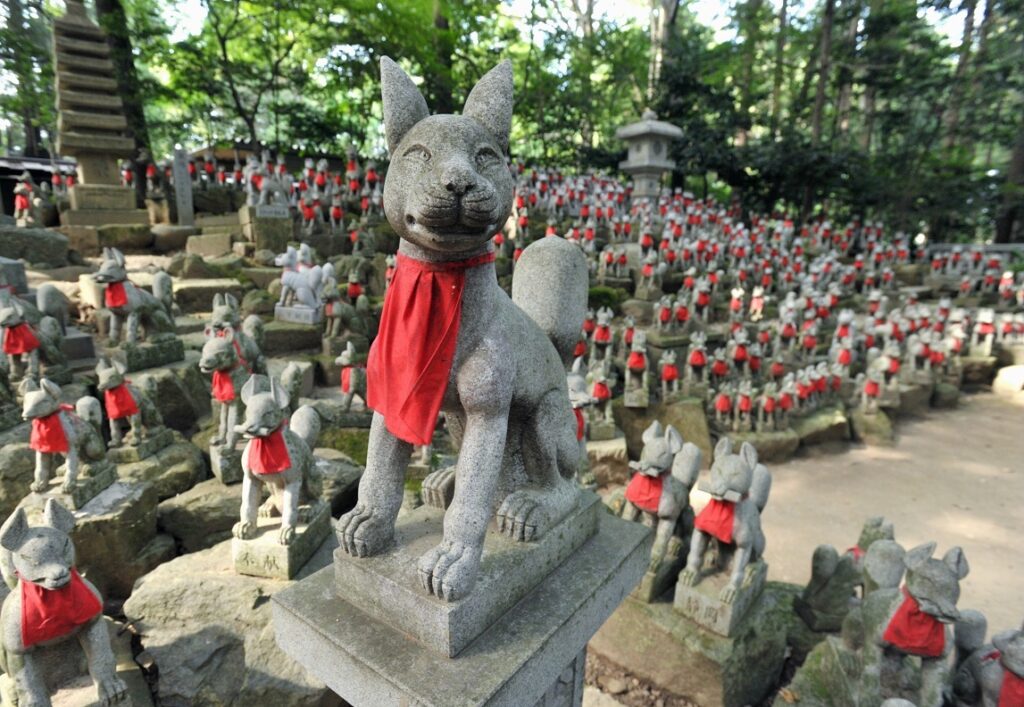
An hour southeast of Nagoya by car or 90 minutes by rail, the city of Toyokawa makes for an easy overnight from the capital. The Toyokawa Kaku Myogonji temple complex here, popularly known as Toyokawa Inari, was founded in 1441. It is associated with prosperity in business and counts among Japan’s major “fox shrines.” Inari is the Shinto deity of rice cultivation, the five grains, and the harvest, and the fox is believed to be its messenger. This fox mythology in turn has older connections to the Dakini figures of Hindu and Tibetan beliefs. As protector of the harvest, by extension Inari is considered in Japan to be the patron of prosperity in farming, commerce, and overall good fortune.

That promise, together with the many historical statues and other treasures on display, a landscaped garden filled with flowering trees, and a stunning array of some 1,000 red-bibbed stone statues of foxes, draws five million people to this sanctuary annually. Aichi’s three most famous warriors (Nobunaga, Hideyoshi, and Ieyasu) all visited the site to pray for success in their battles.
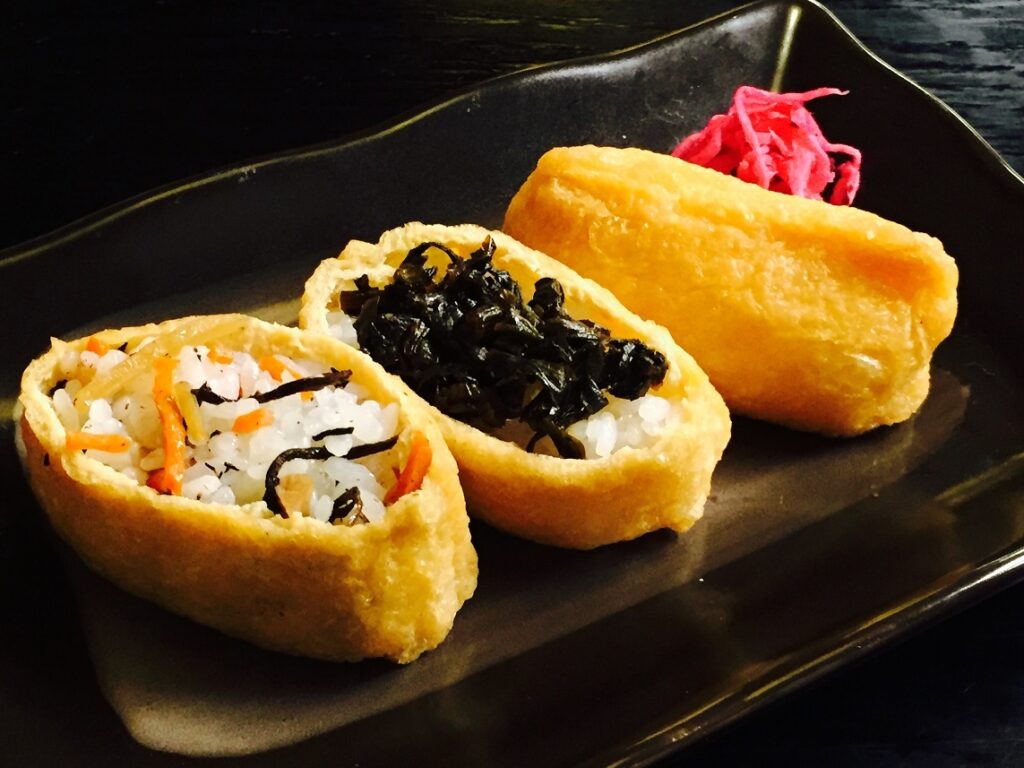
The Monzen promenade leading to the front gate of the complex is lined with shops for souvenirs and handmade goods. The sought-after street food here is inarizushi: vinegared rice stuffed into a soft pouch of thin, sweetly seasoned fried tofu. These tasty snacks are said to have originated with the custom of offering fried tofu to Inari in a bid for good crops. Monzen shops go all out with this treat, making modified versions topped with small bites of other Aichi favorites such as grilled eel and miso-flavored pork cutlet, or flavored with yuzu citrus, Hatcho miso, Japanese apricot, cane sugar, and matcha green tea. Still other shops make a tempura version, wrapping the inarizushi in nori or a fragrant perilla leaf and deep-frying the whole in batter.

Whether you are grazing or gazing, there is a wealth of local tastes to be absorbed at temples and shrines like these in Aichi. For a unique record of your visit no matter where your travels take you, pick up a goshuincho stamp book at one of the larger sanctuaries or even a stationery store. For a modest fee most of the bigger temples and shrines will stamp your book with their official seal and write the sanctuary’s name in elaborate calligraphy along with the date of your pilgrimage.
* * *
One-stop flights from the US West Coast to Chubu Centrair International Airport in Tokoname, Aichi depart from Los Angeles, San Francisco, and Seattle. At the time of this writing, travel restrictions related to the coronavirus pandemic are still in place for much of the world. When they are lifted, the Aichi Tourism Promotion Office looks forward to welcoming visitors back. Until then we will issue bulletins like this one from time to time, showcasing both online and on-site ways to explore and enjoy Aichi’s many offerings.
Wakamiya Hachiman photo courtesy of Wakamiya Hachiman Shrine. Inarizushi and Monzen promenade photos courtesy of Toyokawa Visitors Bureau. All other photos by Jiji Press.
Photo permissions and press and trade inquiries: Madoka Kasahara kasahara@jijiusa.com (Los Angeles, CA)






